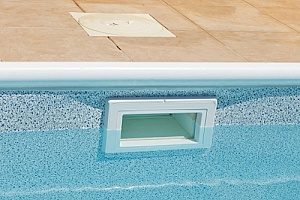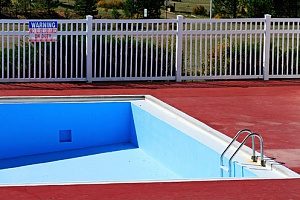 Swimming pools can be a great way to relax and keep cool at home during the summer months. However, there may come a time when you decide you no longer want a pool in your backyard. When that time comes, you will need to decide between a partial and full pool removal. While both options can be effective, there are numerous aspects that may sway your decision one way or another. Here is a look at some of the biggest pros and cons of partial and full pool removals to help you choose the right pool removal service.
Swimming pools can be a great way to relax and keep cool at home during the summer months. However, there may come a time when you decide you no longer want a pool in your backyard. When that time comes, you will need to decide between a partial and full pool removal. While both options can be effective, there are numerous aspects that may sway your decision one way or another. Here is a look at some of the biggest pros and cons of partial and full pool removals to help you choose the right pool removal service.
Partial Pool Removal Pros & Cons
During a partial pool removal, the swimming pool is collapsed leaving a portion of the pool cavity in the ground. This process involves draining the pool of water, drilling holes into the bottom of the pool for proper drainage, and then breaking down approximately 18 inches of pool material from the top. The rubble is typically thrown into the pool cavity. Soil stabilization fabric is then laid over the rubble to minimize soil movement and fill soil is placed into the pool cavity. Finally, the ground is compacted to prevent too much settling from occurring over time.
Partial Pool Removal Pros
-
- Cost Savings: One of the biggest advantages of undergoing a partial pool removal instead of a full pool removal is the cost. On average, a partial pool removal cost $4,025.
-
- Speed: Partial pool removal is also considerably faster than a full pool removal. While the amount of time it takes is largely based on how many people are involved, the average speed in which a pool can be partially removed is 1 to 3 days.
- Ease of Removal: Partial pool removal is not as physically strenuous as a full pool removal as not all the debris has to be removed and discard.
Partial Pool Removal Cons
-
- High Risk: When a pool is not fully removed from the ground, there are certain risks that the homeowner takes on, such as pooling underground and the risk of sinkholes developing.
-
- Legality: It is important to understand that partial pool removal is illegal in many places. If you are not sure of the laws regarding pool removal in your area, be sure to speak with your local city office.
-
- Unbuildable: When you choose to undergo a partial pool removal, you can no longer build on the former location of the pool.
- Decreased Value: When you choose a partial pool removal instead of a full pool removal, the value of your property will likely decrease.
 If you are on a tight budget or on a short deadline but want to have your pool removed, a partial pool removal may be a good option for you. However, it is important to be aware of the various risks that are involved in partial pool removal. Once your pool is removed, which takes considerably less time than a full pool removal, you can take advantage of the extra space in your backyard and eliminate hefty pool maintenance.
If you are on a tight budget or on a short deadline but want to have your pool removed, a partial pool removal may be a good option for you. However, it is important to be aware of the various risks that are involved in partial pool removal. Once your pool is removed, which takes considerably less time than a full pool removal, you can take advantage of the extra space in your backyard and eliminate hefty pool maintenance.
Full Pool Removal Pros & Cons
With a full pool removal, everything goes. The process can be lengthy and involves breaking up all concrete, fiberglass, gunite, steel, and vinyl and then removing it from the pool cavity using special equipment. These materials must then be hauled away and disposed of properly. Once the pool is completely removed, the area is filled in with dirt and compacted. Full pool removal is often the preferred way to go as it allows homeowners to use the land for whatever they please once the pool is gone. However, there are some downfalls that come with full pool removal.
Full Pool Removal Pros
-
- Property Value: If you wish to maintain or even increase your home’s property value, a full pool removal is your best option.
-
- Buildable: When a pool is completely removed and the cavity is properly filled in with dirt and compacted, the land can be safely built upon in the future. This is not possible with a partial removal.
-
- Low Risk: With a full pool removal, there is a much lower risk of problems later on, such as pooling underground and sinkholes.
- Maintenance-Free: When your pool is completely removed, you can reap the benefits of less time and money spent on pool supplies and maintenance.
Full Pool Removal Cons
-
- Higher Cost: A full pool removal costs an average of $9,720. This is more than double the average cost of a partial pool removal which can take a major hit on your finances.
-
- Time-Consuming: Due to the complexity of a full pool removal, you can expect the project to take considerably more time. The average full pool removal takes between 3 and 7 days.
- More Costs: In addition to possibly having to pay a larger crew to work on your pool removal, the project may have other unexpected costs, such as extra dirt to fill in the cavity.
 There are many great reasons to have your pool removed. Not only can you avoid ongoing expenses related to swimming pool maintenance, but you can also avoid the hazards that come with owning a pool, especially if you have small children or pets. In addition, getting rid of an unwanted pool allows for more yard room that you can use for lounging, activities, gardening, or for more extensive landscaping. When you go to sell your home, you may also have a wider market as many homeowners do not want a swimming pool.
There are many great reasons to have your pool removed. Not only can you avoid ongoing expenses related to swimming pool maintenance, but you can also avoid the hazards that come with owning a pool, especially if you have small children or pets. In addition, getting rid of an unwanted pool allows for more yard room that you can use for lounging, activities, gardening, or for more extensive landscaping. When you go to sell your home, you may also have a wider market as many homeowners do not want a swimming pool.
Learn More About Pool Removal
If you have made the decision to get rid of your in-ground pool, you may be contemplating between a partial pool removal and full pool removal. Before making a decision, consider various aspects such as your budget, timeframe, and your future plans for the pool site. If time and money allows, then a full pool removal is often your best bet to avoid the potential downsides that come with a partial removal. For more information about either type of pool removal or to schedule a partial or full pool removal, contact an experienced pool removal contractor today at Dirt Connections.









































